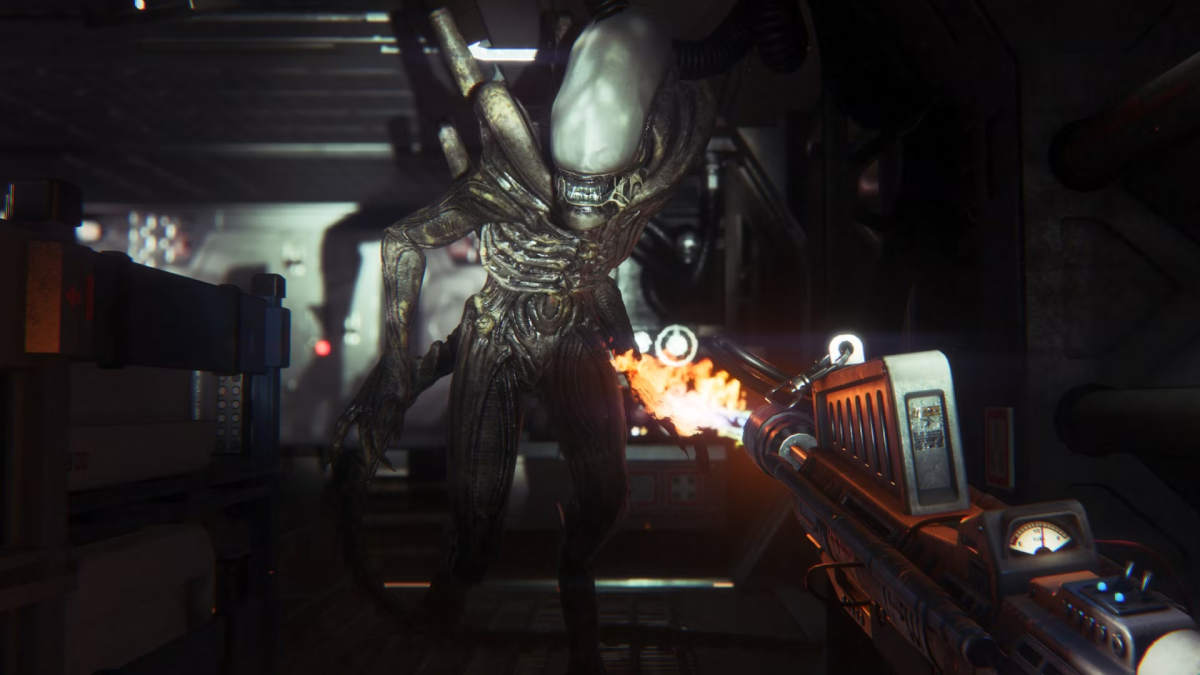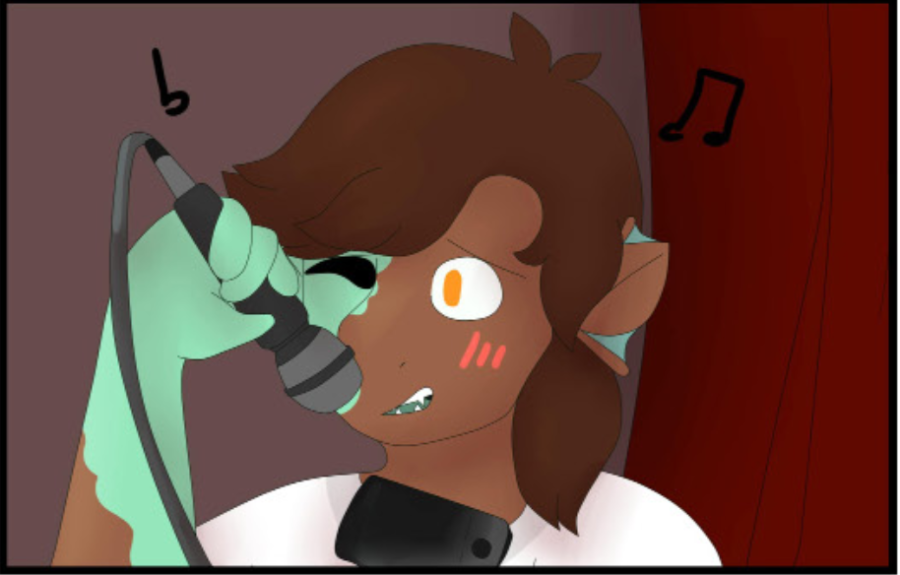In 2014, a horror game called Lurking was released, created by a small team: Shi Chng, Guo Ng, Zhong Soo, and Anping Teo. Although short and mostly experimental, its creative approach to gameplay captivated those who tried it. The premise of the game was to use the player’s microphone in a way that instilled fear: you must find your way out through echolocation. When you make a sound, you can only see the outlines of what’s around you. However, the more you speak, the more the monsters within the building are drawn towards you. The game was quite simplistic, with no complex plot or convoluted gameplay, but the concept opened up a gateway for horror games to immerse players through sound.
Later that same year, a much larger game emerged with a similar concept. Alien Isolation, developed by Creative Assembly and Feral Interactive, was released. This game already utilizes sound as a threat, compelling players to stealthily control their character to evade the alien. Then, a special modification for players was added: the ability to connect your microphone so that any noise you made would be detected, causing the alien to head straight in your direction.
However, as much as I love this game, I find the microphone implementation to be flawed. The only way it will be any sort of threat is if you’re constantly talking, and there’s no reason to be talking that much if you’re focused on a complicated gameplay. The same principle applies to games like Escape the Ayuwoki or The Backrooms 1998 – the concept is intimidating, but you lack a clear objective, making it more of a menace than an engaging experience. Even if it’s made for streamers who are used to doing commentary as they play, it is not difficult to stay quiet when they need to.
This is something I find odd even in very recent games that incorporate microphones, such as Don’t Scream. This game was released on October 27, 2023, and I find that it does not take its audience into account enough. The concept is strong, and the visuals are scary. However, it’s a horror game, which means that the players enjoy horror and are likely conditioned to scary stuff. That means a simple jump scare or sudden noise is not going to make them scream to the point that the voice detection is perceived as a threat. Without any other reason to create a disturbance, the concept becomes meaningless.
I find this defeats the idea, so I’m going to bring up a few games that I believe are strong, relevant examples of how mic implementation should be carried out.
A game that I believe fully considers what the audience wants is one that was released just days apart from Don’t Scream on October 23, 2023. Lethal Company, developed by Zeekerss. This game is impressive to me because it proves that listening to feedback can make all the difference. Zeekerss was a developer of Roblox games. Out of nowhere, they released a game with a simple premise and a collection of ideas that perfectly cater to what people desire in a fun multiplayer horror game. They made millions from this idea. The game is filled with features that make it fun for friends to play together, such as proximity chat (where the distance between you and your friends in-game realistically adjusts how well you can hear them), monsters that you must stay quiet to avoid, and walkie-talkies that will glitch if certain monsters are nearby. There’s even a feature that records voice messages from your friends and plays them back when you’re apart.
Phasmophobia! I’m sure anyone who is a fan of horror games was eagerly anticipating this mention. This multiplayer game was developed by Kinetic Games and released on September 4, 2020. Very similar to Lethal Company, this is a multiplayer horror game with a straightforward concept of ghost-hunting using proximity chat and walkie-talkies.
Another multiplayer game that I absolutely think has a fun and cool way of utilizing the players’ microphones is In Silence. This game was developed by Ravenhood Games and released on October 16, 2020. In this game, a group of people must work together to find supplies across a wide map in order to restart a car that they will use to escape. During this game, one player assumes the role of the monster, who has poor vision but excellent hearing, and can detect any sound on a radar. This practice compels the group to speak only when essential and to communicate efficiently to avoid detection.
Moving on to single-player games, Fears to Fathom: Norwood Hitchhike, was developed by Rayll and released on January 6, 2022. It surprised players with a sudden, fear-inducing use of their microphone. The game does not utilize the microphone until a section where the player is compelled to hide in a closet. All of a sudden, a bar appears on the side of the screen, measuring your volume. If you exceed a certain limit, you will be caught.
I believe this is an excellent way to enhance the experience without it even having to be tied into the plot. And that’s also the reason I love the final game I’ll mention: Welcome to the Game. This game requires you to explore the dark web, compelling you to multitask and navigate while being tracked by dangerous individuals. The game becomes repetitive and tedious as you scour different websites, lulling you into a calm state until occasionally, there’s a possibility that someone might show up outside, surveying your house. In that event, you must quickly turn off the lights and remain still and quiet to make it appear as though no one is home.
Overall, I believe microphone detection is an excellent way to enhance a horror game, increasing immersion by eliminating the excuse that “it’s not like it’s real life,” as you genuinely have to react as your character would. Although, how it is executed can make or break the fear.




































































































































































